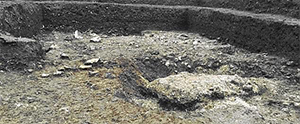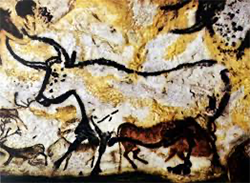|
Stonehenge Builders Lived Just a Mile Away, Archaeologists Say
November 2, 2019
As it turns out, the people who built Stonehenge didn't live very far away.
Archaeologists have found more than 70,000 stone tools at Blick Mead, a site just a mile away from the iconic stone circle monument in Wiltshire. Also known as Vespasian's Camp, the site predates the Romans and nearly everyone else, with settlements dating to about 6000 B.C. The settlement was at that time next to a river, which was on a large flood plain that would have been home to a large number of auruchs, a type of cattle that is now extinct. Among the finds at the dig have been aurochs skulls and bones, situated in a particular way, suggesting that they were placed The people living in Britain at this time would have mostly likely been hunter-gatherers who followed their food sources. Prof. David Jacques of the University of Buckingham said that the fact that these people left behind so many elements of sustained living suggests that they used the area as a permanent camp, a kind of early settlement, with the river as the focal point. Adding to this assertion was the discovery of a ceremonial platform. As well, hildenbrandia, a rare algae that turns the springwater and the nearby stones red, grows in the area; that would have given the stones a mystical appeal, archaeologists said. The dig has been ongoing since 2005. The iconic circle Stonehenge was built in stages, starting about 3100 B.C. The people who did the building would have likely lived in Blick Mead, the archaeologists said.
|
Social Studies for Kids |
Social Studies for Kids
copyright 2002–2024
David White




 there with a certain amount of reverence, if not part of a ceremony. Radar scans of underground layers of soil revealed a 30-foot-long structure that had the remains of cattle prints in it, another sign of the role that such animals played in the society of the people who settled there. Similar findings have been announced at Stonehenge itself.
there with a certain amount of reverence, if not part of a ceremony. Radar scans of underground layers of soil revealed a 30-foot-long structure that had the remains of cattle prints in it, another sign of the role that such animals played in the society of the people who settled there. Similar findings have been announced at Stonehenge itself.
